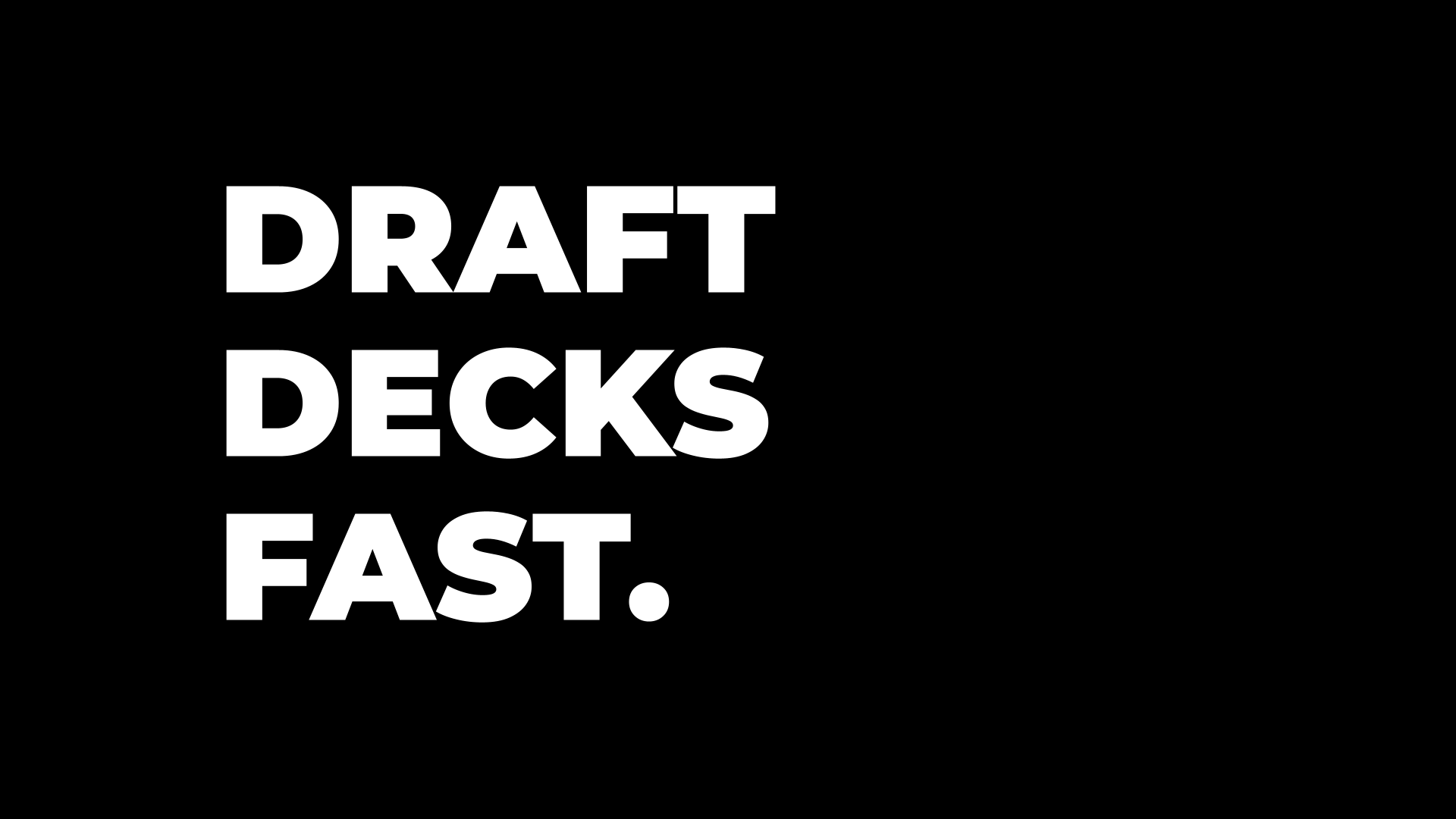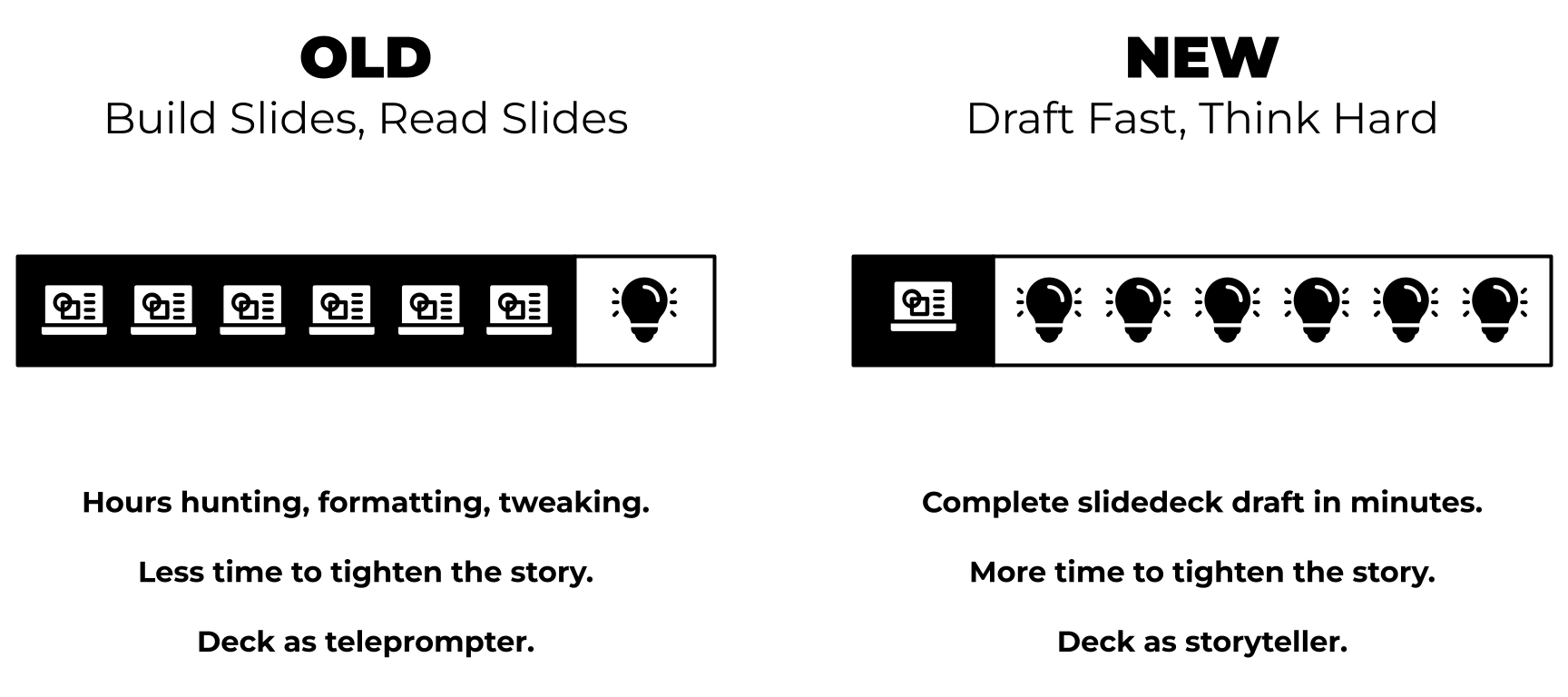
By Gerard Pietrykiewicz and Achim Klor
Achim is a fractional CMO who helps B2B GTM teams with brand-building and AI adoption. Gerard is a seasoned project manager and executive coach helping teams deliver software that actually works.
Here is an effective way to use an AI tool like Manus.im. Pick one shared task everybody hates, like building slide decks. Use AI to get to an 80% draft in minutes. Spend the saved time on decisions and conversations, not formatting.
Over the past few months, we’ve written about why AI adoption frustrates managers and how leaders can remove the barriers.
This time we want to stay close to the ground.
The real question is no longer “What’s our AI strategy?” It’s “What is the smallest thing I can do right now that actually helps my team?”
Not that long ago, simple AI tasks were clunky (one could argue some still are).
You wrote a prompt, fixed the output, and still spent an hour or so cleaning it up.
That has changed.
Today, GenAI and tools like Manus can take you from a blank page to an acceptable first draft with no integrations and no scripts.
So instead of chasing a giant AI program across the whole company, start with one workflow everyone already knows and already dreads.
PowerPoint.
At some point, most of us have to create a slide deck. It’s repetitive work. It eats time. Most people do not enjoy doing it (or sitting through bullet-point hell).
Recently, Gerard has been running the following use case with his team.
1. Start with a single prompt inside Manus (you can grab the prompt here):
2. Then attach a document with the content and run the prompt.
3. In about five minutes, Manus spits out a fully structured deck with:
Is it perfect? No.
Is it good enough to work with? Yes. Roughly 80% of the way there in fact.

Now you have oodles of time left to focus on fine-tuning the idea inside the deck instead of the deck itself.
This is where expectations matter.
AI will not:
The quality of the presentation is still limited by your own tacit knowledge and the input you give it. If the document is vague or wrong, the deck will be vague or wrong.
What AI can do:
AI gets you to a rough but usable version fast. You still need your tacit knowledge (those finite judgment calls in your head that never make it into documentation) to edit, refine, and present it well.
That last 20% is where your expertise shows up.
AI does not do that part for you (nor should it).
When AI adoption stalls, a lot of times it’s because we start too big.
We talk about agents and platforms that most people will never touch. Or we tell everyone to “go use AI” for random tasks like email summaries, then walk away.
Real adoption looks different.
It starts with one visible, repeatable use case that:
A slide deck generator does that:
When we see something like, “Watch this: five minutes from doc to deck,” we don’t just hear about AI. We feel the benefit.
Skepticism turns into curiosity.
Curiosity turns into “Can I try that with my next presentation?”
And that’s the point.
It’s easy to treat this only as a time-saver.
But the point of a deck is not to have slides that act as a teleprompter. The point is to communicate an idea clearly enough that your team can act on it.
If AI takes the build time from two hours down to five minutes, the real win is what you now do with those 115 minutes you just freed up:
AI makes you more efficient at building the artefact.
Use that space to become “better at” the communication.
You don’t need Manus specifically. Any solid AI tool works.
Here's the workflow:
Now you are not “playing with AI.”
You are changing how work gets done in a way your team can see and copy.
You’re helping your team become more efficient because they are more effective first.
We didn’t include the full prompt here because it is long and specifically tuned for Manus.
If you want to give it a try using Manus, grab the free Google Doc here.
Feel free to share it and make it your own.
Again, the point here is not “magic words”.
It’s the pattern:
That’s how real adoption happens—one visible workflow at a time.
If you like this co-authored content, here are some more ways we can help:
Cheers!
This article is AC-A and published on LinkedIn. Join the conversation!